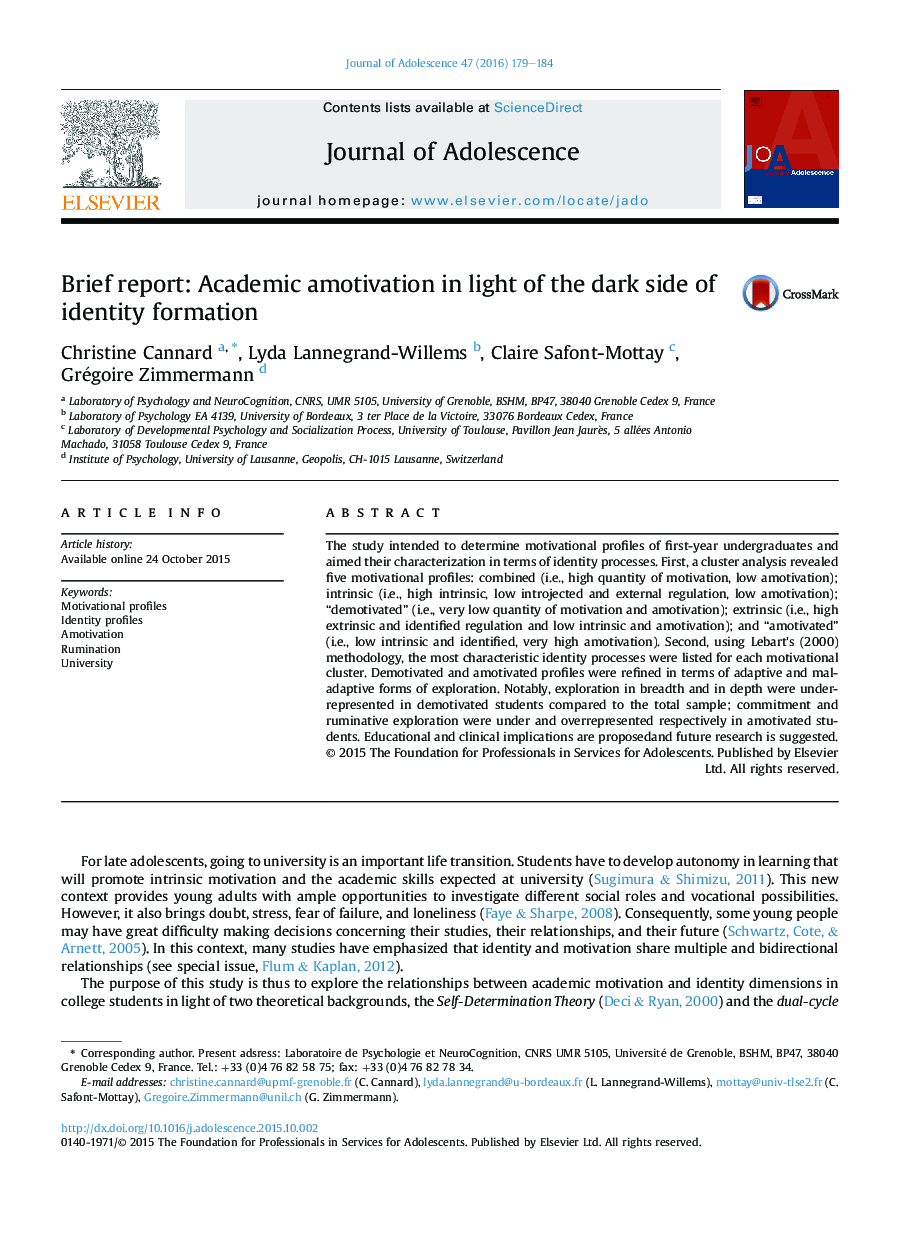| Article ID | Journal | Published Year | Pages | File Type |
|---|---|---|---|---|
| 880584 | Journal of Adolescence | 2016 | 6 Pages |
The study intended to determine motivational profiles of first-year undergraduates and aimed their characterization in terms of identity processes. First, a cluster analysis revealed five motivational profiles: combined (i.e., high quantity of motivation, low amotivation); intrinsic (i.e., high intrinsic, low introjected and external regulation, low amotivation); “demotivated” (i.e., very low quantity of motivation and amotivation); extrinsic (i.e., high extrinsic and identified regulation and low intrinsic and amotivation); and “amotivated” (i.e., low intrinsic and identified, very high amotivation). Second, using Lebart's (2000) methodology, the most characteristic identity processes were listed for each motivational cluster. Demotivated and amotivated profiles were refined in terms of adaptive and maladaptive forms of exploration. Notably, exploration in breadth and in depth were underrepresented in demotivated students compared to the total sample; commitment and ruminative exploration were under and overrepresented respectively in amotivated students. Educational and clinical implications are proposedand future research is suggested.
